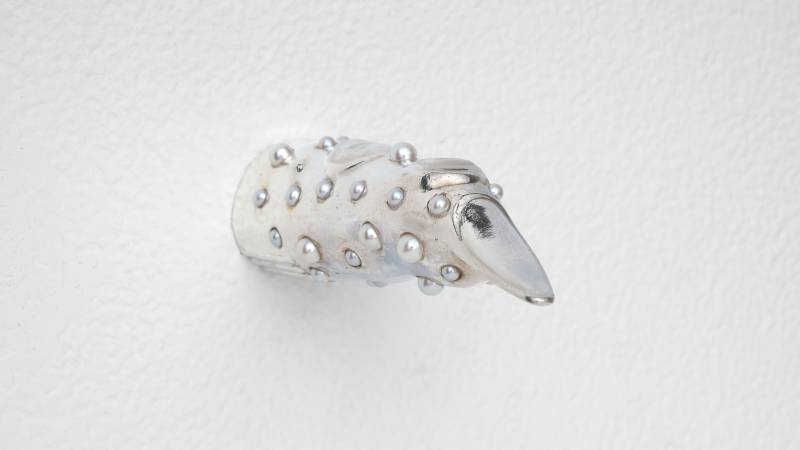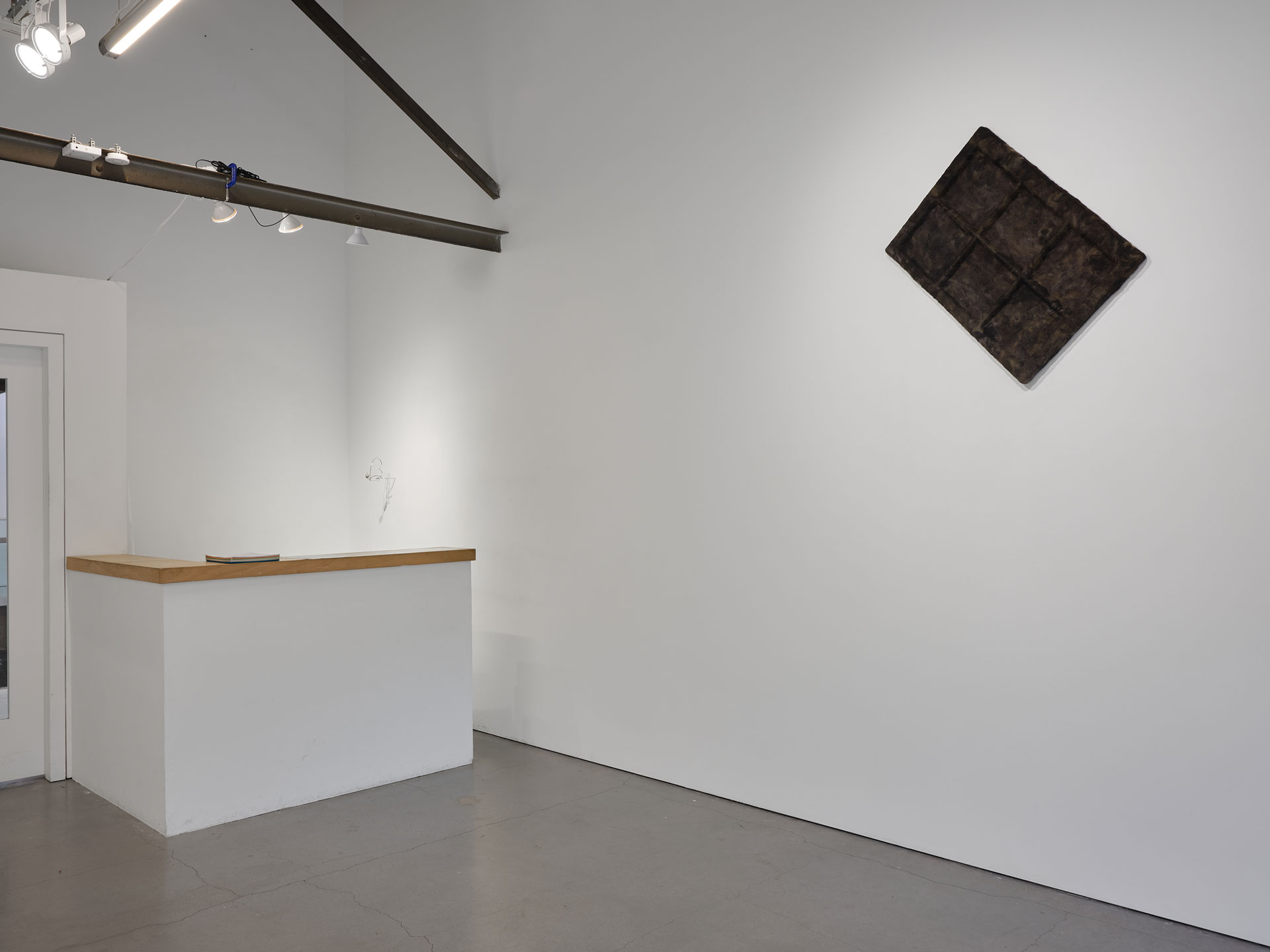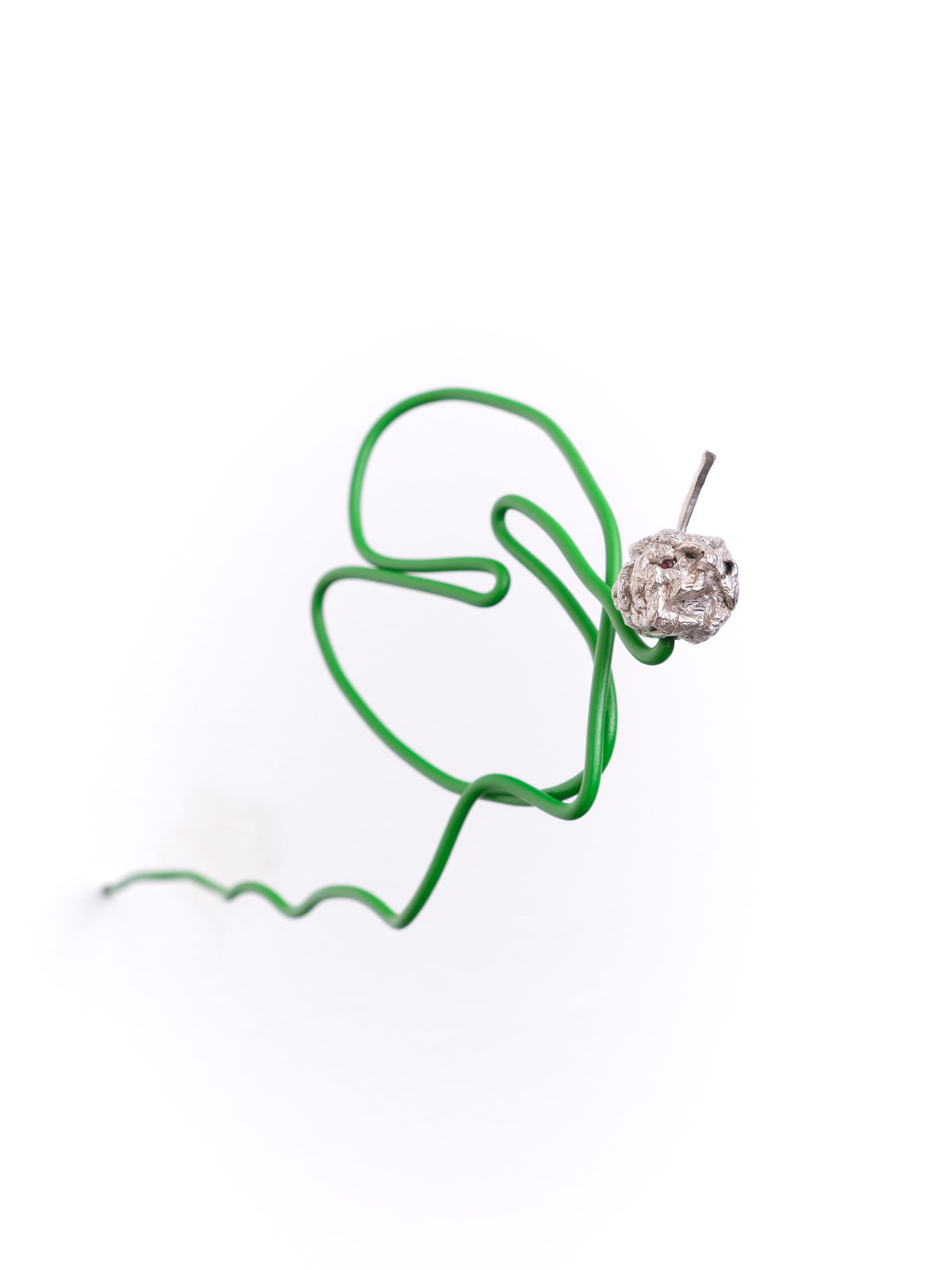There are days when it’s really good to be alone with art. When it’s good to be away, for even half an hour, from the internet and the news. In the best instances, time with art is time spent with objects someone has crafted with great care. To be alone with those objects is to feel as if they were made for you—and only you—to experience at your own speed.
Spellbound Sculptures Fill ‘Compost Problems’ with Witchy Beauty

In Lauren McKeon’s Compost Problems, this psychic reprieve comes in the form of witchy beauty. Work made in the woods of Vermont enters Bass & Reiner’s white-walled gallery space delicately; there are just eight (mostly small-scale) pieces in the show. As is often the case with smaller works, McKeon’s sculptures of silver, gems, steel and felted wool welcome sustained viewing. You need to get close to see how two mouse tails cast in silver weave through a wire screen in cornered, cut, cast. With a slight shift in vantage point, you can see each severed end of those tails holds a sparkling gem—a minute and delectable surprise.
McKeon performs a kind of alchemy with the work in Compost Problems, transforming unwanted objects and creatures into materially surprising, and often glittering, sculptures. This transmogrification is a familiar quality in her practice. In a 2020 show with Will Rogan at 1599fdt’s “Tam-Shack” space (the exterior of the organizer’s Mill Valley home), she cast plump figs in lead and sat them atop a wooden post, turning delicious fruit into toxic lumps of metal. In a 2018 show at Oakland’s LAND AND SEA, she presented opaque “sunglasses” made of toilet paper, crab shell, pigment, flour, glue and linseed oil.

McKeon’s work is deeply rooted in the place of its making. With Compost Problems, her 2020 move from a Sausalito boat to her hometown of West Brookfield, Vermont, manifests in markers of shifting seasons and reflections on her new/old surroundings. Witch window (portal for Lady), a window covered in darkly mottled, hand-dyed felt, resembles a starless night sky. Mounted high on the gallery wall, the piece speaks to a Vermont-specific building trend of placing a full-sized window at a 45-degree angle between two roof lines. The etymology of “witch window” is hazy and possibly morbid, but the weirdness of this vernacular architecture fits well within McKeon’s interests: specific references to location, personal symbology, and highly crafted and time-intensive modes of making.
Early in the pandemic, McKeon started marking time in one-day, one-minute bursts, posting videos on her Instagram account in an effort to expend some of that era’s frantic, anxious energy. In concert, the videos traced the very different rhythms of living things unaffected by the coronavirus. A blooming poppy was a recurring character, as were the marine animals she bobbed next to in Richardson Bay.

With Compost Problems, time is an unlisted material in each of the works on view, and it stretches well beyond the hyper pace of social media. Three pieces titled Apple head, made of silver, steel and spray paint, were cast from carved, shrunken apples—each produced by a 100-year-old tree in McKeon’s family’s front yard. The crone-like, wizened faces are hybrid creatures, mounted on steel armatures bent into the loose shapes of different insects.
It takes time, of course, to carve and dry an apple, cast it in silver and embed gems into its craggy surface. But the tree has also participated in the making of these sculptures, and McKeon is only the latest beneficiary in her family’s long relationship with it. Other Vermont trees contribute to the show, too: A 10-jar series of maple syrup harvested by McKeon spans the sugaring season, ranging in color from a light gold to a dark amber.
Text from the gallery characterizes West Brookfield as “a place where time moves slow and fast (nothing ever happens except the stark seasons rapidly shuffling in and out).” There’s a hint of danger in that rapid shuffle, an eerie fear (for this Californian) of being snowed in and cut off. Compost Problems is filled with reminders of prosaic “nothing ever happens” things, both annoying and sweet, but it is also a show about the real and imagined dangers of life in the woods. Cementing the show’s fairy-tale feel are two cast fingers that poke out from the gallery walls. Milk is covered in pearls, clever stand-ins for warts, while Meat, coated in liver of sulfur, has the rainbow hues of a fresh oil slick.
If you’re alone in the gallery, the points of those two nails can hold you, spellbound, for as long as you need.

‘Compost Problems’ is on view at San Francisco’s Bass & Reiner Gallery (1275 Minnesota St.) through June 18. Details here.

